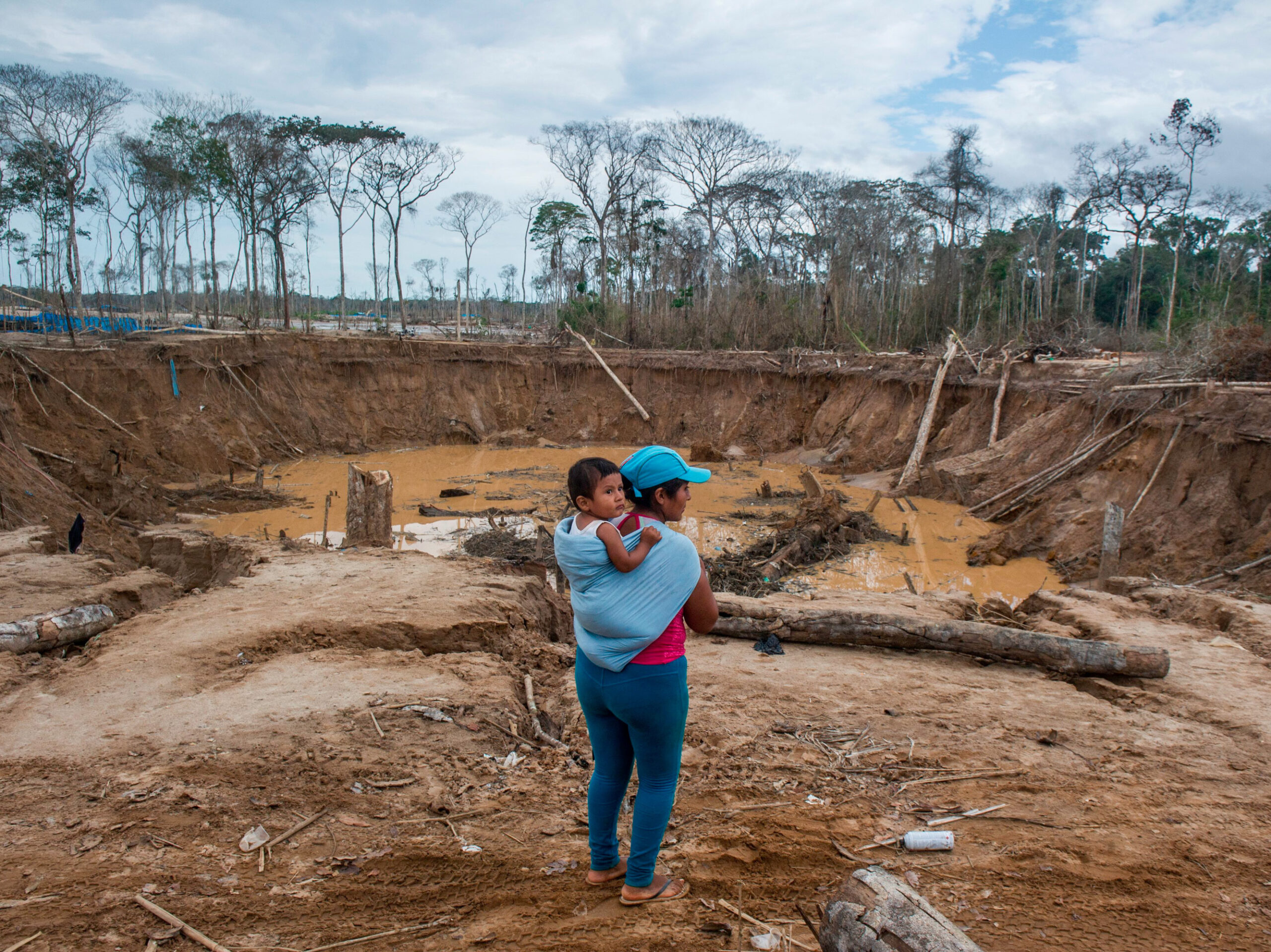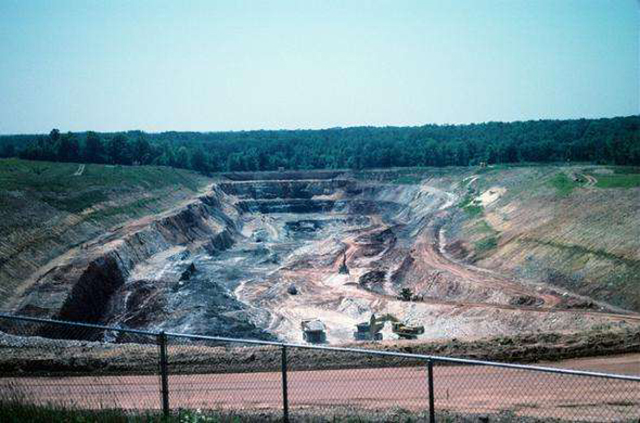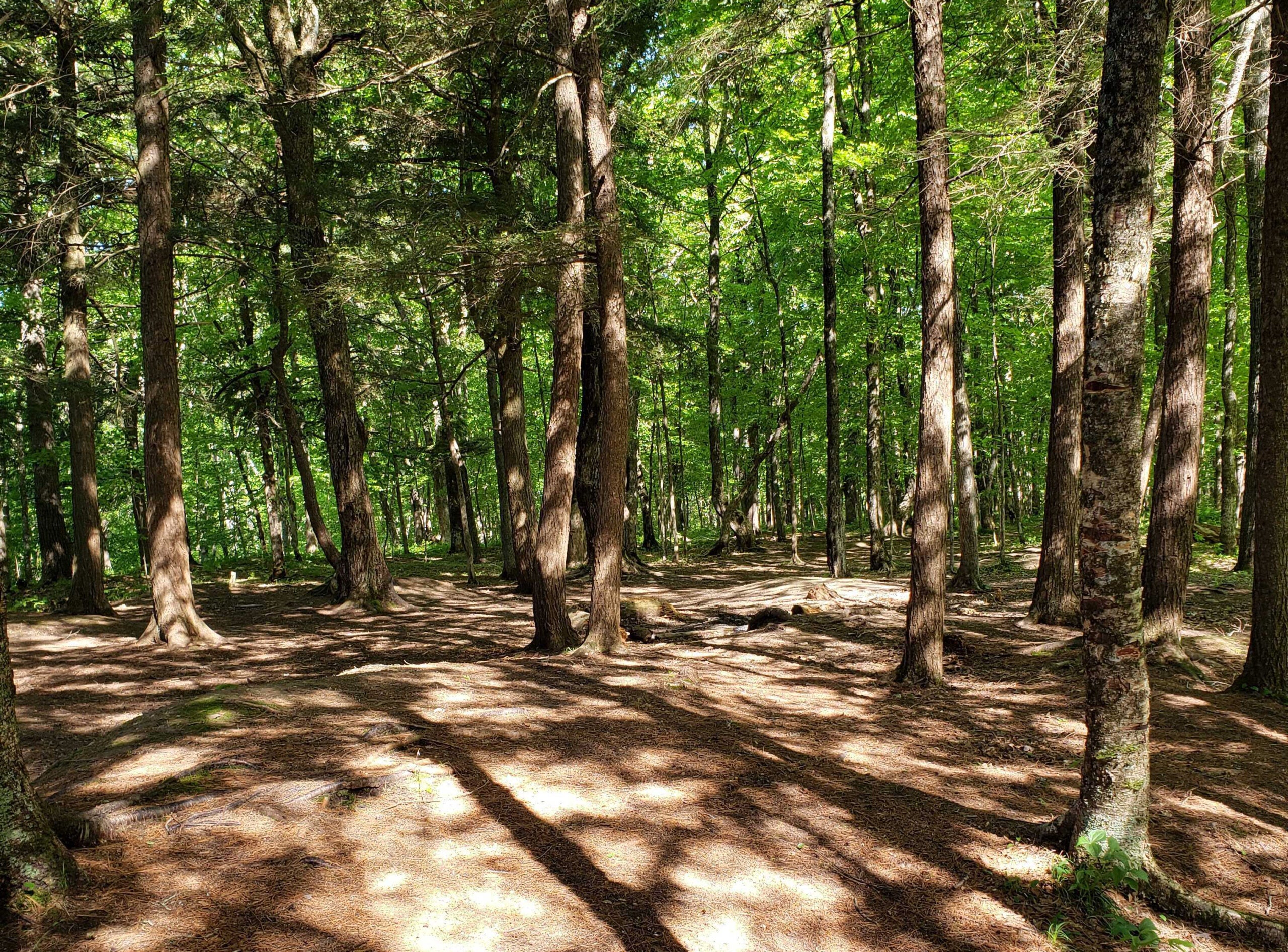MADRE DE DIOS, Peru — Sunlight dapples the once-denuded forest floor as saplings spread their branches and leaves overhead, slowly forming a lush canopy.
Beside each young tree, a sign notes its species. Lupuna, says one, the colloquial Peruvian term, and below that its scientific name, Ceiba pentandra — in other words, a kapok tree, known for its cotton-like fibers. Huito, says another sign, or Geinpa americana, which produces edible gray berries.
Each sapling is distinct, a reflection of the Amazon’s stunning biodiversity, with so many different species that you might go acres without finding a repeat.
Stay informed on the latest news
Sign up for WPR’s email newsletter.
Yet this young forest did not spring up naturally. It has been carefully recreated by humans in an area that was, until just three years ago, a heavily contaminated moonscape.
This land was stripped of its dense vegetation by miners scouring the subsoil for tiny specks of gold, using mercury to separate the gold from the sediment. Many thought that a healthy forest would never thrive in impoverished, mercury-laden topsoil and that the piles of sandy tailings, the residue from the gold mining effort, and the pools of wastewater were irremediable.mercury that many illegal miners use in abundance to separate the gold from the sediment.
Meanwhile, the liquid metal has seeped into the ecosystem, including the rivers, triggering an epidemic of chronic mercury poisoning among locals.
“It feels good to see the forest grow back,” says Pedro Ynfantes, 66, the miner whose legal mining concession of 1,110 acres includes this 10-acre patch of land where this young forest is located. “We don’t want to deforest. When we had the opportunity to let the forest grow back, we took it. It’s much better this way.”
The opportunity he refers to came via U.S. nonprofit Pure Earth, which works with communities across the Global South to remediate environmental problems left behind by mining, much of it illegal. Their biggest targets are mercury and lead contamination.
An illegal goldrush
Madre de Dios is an obvious place for the group to operate. The environmental devastation caused by gold miners in this pocket of the Peruvian Amazon has for years been the subject of international headlines.
It reached a climax following the financial meltdown of 2008 and ensuing global recession. Gold prices rocketed as investors sought to buy up the precious metal, which many thought would be a safer investment during rocky economic times.
That triggered a chaotic, illegal goldrush here as thousands of impoverished Peruvians, mainly from the Andes, rushed to the jungle to comb through the soil and riverbeds for gold-rich sediment washed down from the mountains to the west. Nearly 250,000 acres of the Peruvian Amazon have been destroyed, according to a 2018 study by Wake Forest University researchers.
Today, around 50,000 people are thought to still work as illegal gold miners in Madre de Dios, making up a significant chunk of the local economy. There is also a smaller number of “informal miners” who have some but not all the necessary permits. And then, smallest of all, is the group of legal miners.
Entire towns have sprung up in the jungle around the mining sites. Some of the miners have even operated inside protected natural areas in a region famed for its ecolodges, where international tourists come to see monkeys, macaws, caimans, otters and other wildlife.
Security forces have launched anti-mining operations down the years, even blowing up the miners’ equipment deep in the jungle. But most local politicians, including Madre de Dios’ members of Peru’s national congress, broadly support the miners, who are a powerful constituency in the relatively sparsely populated jungle region.
Restoring the forest
Now there’s an effort to address the damage. Initially working with the region’s legal miners, most of whom were here before the 2009 gold rush kicked off, the nonprofit group Pure Earth is using this patch of Ynfantes’ land as a pilot project to show how the rainforest can be regenerated after the last traces of gold have been plucked from the soil.
It took a sustained outreach effort. Many miners are wary of or even downright hostile to foreign NGOs, which have repeatedly called for gold mining to be banned or severely curbed in the Peruvian Amazon — steps they say would cost them their livelihood.
“I am feeling optimistic,” says France Cabanillas, Pure Earth’s local coordinator, who has been appealing to the frustration of many miners at the heavy toll they have taken on the jungle and their desire to minimize their environmental footprint for the next generation.
“We still have a lot to do but this pilot is going well. Down the years, the miners have been getting a lot of stick but not much carrot when it comes to their environmental impacts,” says Cabanillas. “We are offering them a carrot, allowing them to remediate their own impacts. Many of the miners do not want to be destroying the rainforest.”
Before the miners plant the carefully-selected mix of tree species, they had to prepare the earth. Most of the topsoil had been washed away by the miners’ heavy use of hoses.
That preparation involved adding biochar (burnt organic material) and even molasses, which contain fixed carbon and minerals, along with various other nutrients. The miners also had to dig tiny moats around the saplings to prevent all of this new planting from being washed away. Now, after three years, the forest is visibly coming back.
The rejuvenated rainforest also mitigates the impact of the mercury used by many of the illegal miners.
Research done by Pure Earth shows that the barren, sandy soil emits mercury. But in a rainforest, the ecosystem actually absorbs some of the metal, boosting public health. A 2021 meta-analysis by researchers at Nanjing University in China found that biochar can help keep mercury from migrating into the water table or the air. Other research finds promising effects from certain plants and fungi.
That remediation cannot come quickly enough, says William Pan, a global health professor at Duke University, who has studied the impacts of mercury poisoning here in Peru as well as in Ecuador, Guyana and Ghana but is not involved with Pure Earth.
Pan says the idea that regenerated jungle would absorb the mercury “makes biological sense” but needs to be further tested.
“Mercury poisoning is a major problem in Madre de Dios. We’re seeing an entire generation affected by this,” he says. “Something needs to be done urgently.”
Phasing out mercury
The problem is intense in Peru, where 60% of the population exceeds the U.S. Environmental Protection Agency’s limits for mercury concentration in their hair. That is because much of the gold mining happens in and beside rivers whose fish, which accumulate mercury in their bodies, are a staple of local diets.
The health impacts, according to the World Health Organization, include developmental delays for children, cognitive impairment and damage to the kidney, lungs and immune system.
In addition to its work to regenerate the jungle, Pure Earth has shown other miners from AMATAF, the small legal mining association of which Ynfantes is a member, how to extract gold without using mercury. The techniques are more expensive and elaborate: using a “shaking table” to physically separate grains of the precious metal from the sediment; smelting with borax.
AMATAF miners have obtained the Fairmined certification from the Alliance for Responsible Mining, attesting to their efforts to mine in “an economical, technologically and environmentally responsible manner.”
“We want to work responsibly, for the environment and health, so it’s a feeling of satisfaction,” says Khaled Celadita, 26, another AMATAF miner. “We’re proud to be able to do this and, hopefully, set an example for the other miners.”
Reporting for this story was supported by a travel grant from the Pulitzer Center on Crisis Reporting. Simeon Tegel is a British journalist based in Lima, Peru, from where he regularly roams across Latin America. He covers most topics under the sun, from human rights and democracy to cuisine and travel, but specializes in environmental stories.9(MDAyMjQ1NTA4MDEyMjU5MTk3OTdlZmMzMQ004))




